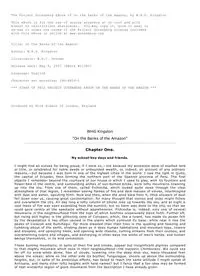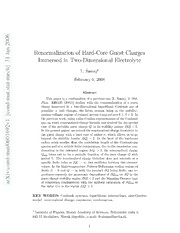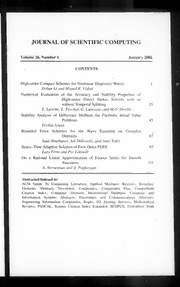
Strategic Molecular Design to Engineer the Electron Affinity of Self-Assembling Organic PDF
Preview Strategic Molecular Design to Engineer the Electron Affinity of Self-Assembling Organic
UNLV Theses, Dissertations, Professional Papers, and Capstones 5-1-2016 Strategic Molecular Design to Engineer the Electron Affinity of Self-Assembling Organic Semiconductors Kelly Nicole Zaugg University of Nevada, Las Vegas, zaugg@unlv.nevada.edu Follow this and additional works at:http://digitalscholarship.unlv.edu/thesesdissertations Part of theChemistry Commons Repository Citation Zaugg, Kelly Nicole, "Strategic Molecular Design to Engineer the Electron Affinity of Self-Assembling Organic Semiconductors" (2016).UNLV Theses, Dissertations, Professional Papers, and Capstones. 2767. http://digitalscholarship.unlv.edu/thesesdissertations/2767 This Thesis is brought to you for free and open access by Digital Scholarship@UNLV. It has been accepted for inclusion in UNLV Theses, Dissertations, Professional Papers, and Capstones by an authorized administrator of Digital Scholarship@UNLV. For more information, please contact digitalscholarship@unlv.edu. STRATEGIC MOLECULAR DESIGN TO ENGINEER THE ELECTRON AFFINITY OF SELF-ASSEMBLING ORGANIC SEMICONDUCTORS By Kelly N. Zaugg Bachelor of Science – Chemistry University of Minnesota 2012 A thesis submitted in partial fulfillment of the requirement for the Master of Science – Chemistry Department of Chemistry and Biochemistry College of Sciences The Graduate College University of Nevada, Las Vegas May 2016 Thesis Approval The Graduate College The University of Nevada, Las Vegas April 5, 2016 This thesis prepared by Kelly N. Zaugg entitled Strategic Molecular Design to Engineer the Electron Affinity of Self-Assembling Organic Semiconductors is approved in partial fulfillment of the requirements for the degree of Master of Science – Chemistry Department of Chemistry and Biochemistry Dong-Chan Lee, Ph.D. Kathryn Hausbeck Korgan, Ph.D. Examination Committee Chair Graduate College Interim Dean Gary Kleiger, Ph.D. Examination Committee Member Kathleen Robins, Ph.D. Examination Committee Member Woosoon Yim, Ph.D. Graduate College Faculty Representative ii ABSTRACT Strategic Molecular Design to Engineer the Electron Affinity of Self-Assembling Organic Semiconductors by Kelly N. Zaugg Dr. Dong-Chan Lee, Exam Committee Chair Associate Professor of Chemistry University of Nevada, Las Vegas Development of electron-accepting (n-type) semiconductors used in organic photovoltaic cells and field effect transistors has been an area of research with less advancement compared to their electron-donating (p-type) counterparts. Currently, the highest performing n-type semiconductor is a fullerene-based derivative (PCBM) with a favorable E of -4.08 eV. LUMO However, PCBM has limited absorption in the visible region and fixed electron affinity. This work focuses on the development of self-assembling n-type materials with controllable electronic properties by strategically lowering E to a level comparable to PCBM. Molecular LUMO design follows an acceptor-acceptor'-acceptor (A-A'-A) configuration; with A being two 2,3- dioctyloxyphenazine substituents connected to A’ with a C-C triple bond. A’ was altered to increase the electron deficiency using benzothiadiazole (BTD), naphthalene diimide (NDI), and perylene-tetracarboxylic diimide (PTCDI). Based on this molecular design, four new n-type materials (BTD-P, NDI-P-1, NDI-P-2, PTCDI-P) were successfully synthesized with low E values of -3.34 eV, -3.90 eV, -3.90, and -3.97 eV, respectively. Photophysical, thermal, LUMO and electrochemical properties were studied using UV-Visible absorption and fluorescence emission spectroscopy, differential scanning calorimetry, thermogravimetric analysis, and cyclic voltammetry. Theoretical evaluations were conducted to understand the experimental electronic iii properties. Charge-transfer (CT) was also used to test the accepting properties of the title molecules when paired with a pyrene donor. Successful CT results were seen using NDI-P-1, which were confirmed through UV-Vis and fluorescence spectroscopy. The morphology of the CT complex was studied with polarized optical microscopy (POM). Additionally, fluorescence resonance energy transfer (FRET) through organogelation was studied with BTD-P as a donor with NDI-P-2 as an acceptor. It was found that FRET was efficient even at low acceptor concentration of 5mole%. FRET results were characterized with fluorescence spectroscopy and POM. iv ACKNOWLEDGEMENTS I express my greatest gratitude towards my advisor, Dr. Dong-Chan Lee, who has guided me through the last two years giving me invaluable knowledge that helped me grow as a chemist. His constant insight paired with his broad intelligence has brightened my ambition and improved my diligence. I am extremely grateful to have such a supportive advisor that truly cares about my progress, even at times when I know I’ve managed to test his patience. He continues to push me towards greatness and has never accepted anything less. I would also like to express gratitude towards my graduate committee members: Dr. Kathy Robins, Dr. Gary Kleiger, and Dr. Woosoon Yim. They have given me encouragement and provided helpful advice which has improved my thesis content. I appreciate their doors always being open and their willingness to help in any way they can. Their guidance has been of great importance for my academic advancement. Additionally, I’d also like to acknowledge partial financial support from National Science Foundation (DMR-0846479). My gratitude continues to extend as I would also like to further thank UNLV Chemistry Department faculty including: Dr. Jun Young Kang, Dr. Pradip Bowmik, Dr. Haesook Han, for use of their chemicals and instruments; and Mark Miyamoto, Deborah Masters, and Carolyn Hatchett, for all of their assistance. I’d also like to give special thanks to my fellow students: Jungsoo Nam, Jung Jae Koh, John Velasco, Morgan Jarvis, Jason Sylva, Hayley Heers, and Samantha Itchon. These students have easily become good friends and have always been willing to help through many difficult times. Outside the department, I have been extremely blessed with such a strong and supportive husband who has put up with my many complaints, late nights and stressful stages; but has always given me solid encouragement and stood by my side. My parents and in-laws also v deserve superior thanks for showing such praise and always believing in me. In addition to family, I couldn’t have gotten through this without my amazing running friends. Being able to run off the stress and vent to friends has been a great way to stay focused. Without such great friends and family behind me, this accomplishment could never be possible. vi TABLE OF CONTENTS ABSTRACT ................................................................................................................................... iii ACKNOWLEDGEMENTS ............................................................................................................ v TABLE OF CONTENTS .............................................................................................................. vii LIST OF TABLES ......................................................................................................................... ix LIST OF FIGURES ........................................................................................................................ x LIST OF SCHEMES.................................................................................................................... xiii LIST OF ABBREVIATIONS ...................................................................................................... xiv 1 INTRODUCTION ................................................................................................................... 1 1.1 General Introduction ........................................................................................................... 1 1.2 Molecular Design ................................................................................................................ 3 2 EXPERIMENTAL ..................................................................................................................... 4 2.1 Instrumentation ................................................................................................................... 4 2.2 Synthetic Procedures ........................................................................................................... 5 2.3 Organogelation .................................................................................................................. 16 2.4 Cast Film Preparation ....................................................................................................... 17 3 RESULTS AND DISCUSSION .............................................................................................. 17 3.1 Synthesis............................................................................................................................ 17 3.2 Optical Properties .............................................................................................................. 25 3.2.1 UV-Visible Absorption Spectroscopy .................................................................... 25 3.2.2 Fluorescence Spectroscopy ....................................................................................... 30 3.3 Electrochemical Properties ............................................................................................... 34 3.3.1 Cyclic Voltammetry ............................................................................................... 34 3.4 Theoretical Evaluation ...................................................................................................... 36 3.4.1 HOMO and LUMO Energy Levels ............................................................................. 36 vii 3.4.2 Frontier Molecular Orbital Diagrams ..................................................................... 38 3.4.3 Energy Minimized Structures-Dihedral Angles ..................................................... 39 3.5 Thermal Properties ............................................................................................................ 40 3.5.2 Differential Scanning Calorimetry ......................................................................... 40 4 CHARGE TRANSFER ......................................................................................................... 43 4.1 Optical Properties.............................................................................................................. 45 4.1.1 UV-Vis Absorption Spectroscopy .......................................................................... 45 4.1.2 Fluorescence Spectroscopy .................................................................................... 46 4.2 Assembly Properties ......................................................................................................... 48 4.2.1 Polarized Optical Microscopy ................................................................................ 48 5 ENERGY TRANSFER THROUGH ORGANOGELATION .............................................. 50 5.1 Organogelation .................................................................................................................. 50 5.1.1 Polarized Optical Microscopy ................................................................................ 52 5.2 Optical Properties.............................................................................................................. 53 5.2.1 Fluorescence Spectroscopy .................................................................................... 53 6 CONCLUSION ..................................................................................................................... 56 APPENDIX ................................................................................................................................... 58 REFERENCES ............................................................................................................................. 60 CURRICULUM VITAE ............................................................................................................... 68 viii LIST OF TABLES Table 1. Molar absorptivity (ε) of title compounds at λ . .......................................................... 28 max Table 2. UV-Vis absorption edge and calculated band gap energy for all title compounds. ....... 29 Table 3. Stokes shift of title compounds calculated with λ and λ . ......................................... 31 em abs Table 4. Calculated E levels for title compounds using Cyclic Voltammetry ...................... 36 LUMO Table 5. Summary of electronic properties ................................................................................... 37 Table 6. Gelation test of BTD-P, NDI-P-1 and NDI-P-2 in TCE ............................................... 51 ix
Description:The list of books you might like

The 5 Second Rule: Transform your Life, Work, and Confidence with Everyday Courage

Do Epic Shit

As Good as Dead

Rich Dad Poor Dad
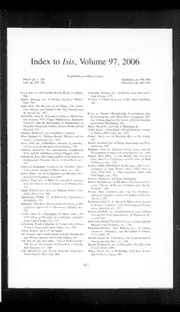
Isis 2006: Vol 97 Index & Table of Contents

The Batrisini of Sri Lanka (Coleoptera: Staphylinidae: Pselaphinae)
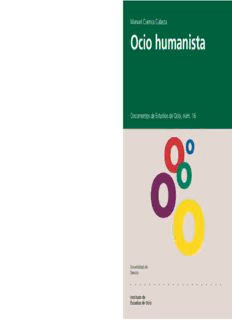
Ocio humanista: dimensiones y manifestaciones actuales del ocio
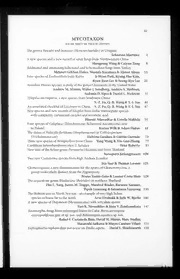
Mycotaxon 2006: Vol 96 Table of Contents

Attitudes, Personality and Behavior (2nd Edition)
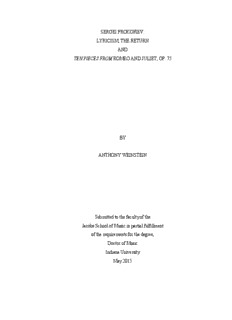
BY ANTHONY WEINSTEIN

Greek Government Gazette: Part 2, 2006 no. 518
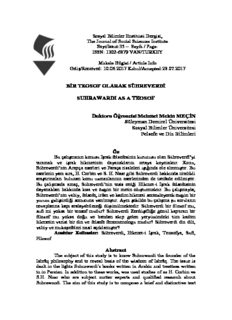
BİR TEOSOF OLARAK SÜHREVERDİ SUHRAWARDI AS A TEOSOF Doktora Öğrencisi Mehmet ...
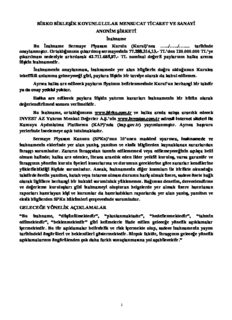
BİRKO BİRLEŞİK KOYUNLULULAR MENSUCAT TİCARET VE SANAYİ ANONİM ŞİRKETİ
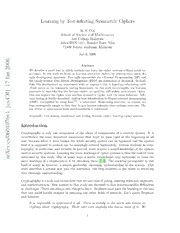
Learning by Test-infecting Symmetric Ciphers
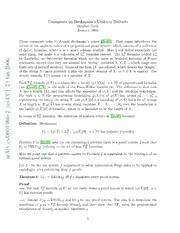
Comments on Beckmann's Uniform Reducts
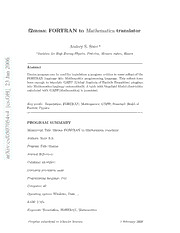
f2mma: FORTRAN to Mathematica translator

c Copyright 1996 Anthony G. LaMarca - Computer Science

Die Passivlegitimation im Arzthaftpflichtprozeß: Unter Berücksichtigung der Organisation der Krankenversorgung
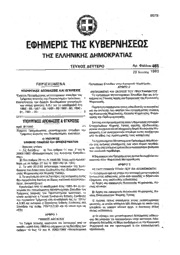
Greek Government Gazette: Part 2, 1993 no. 465
